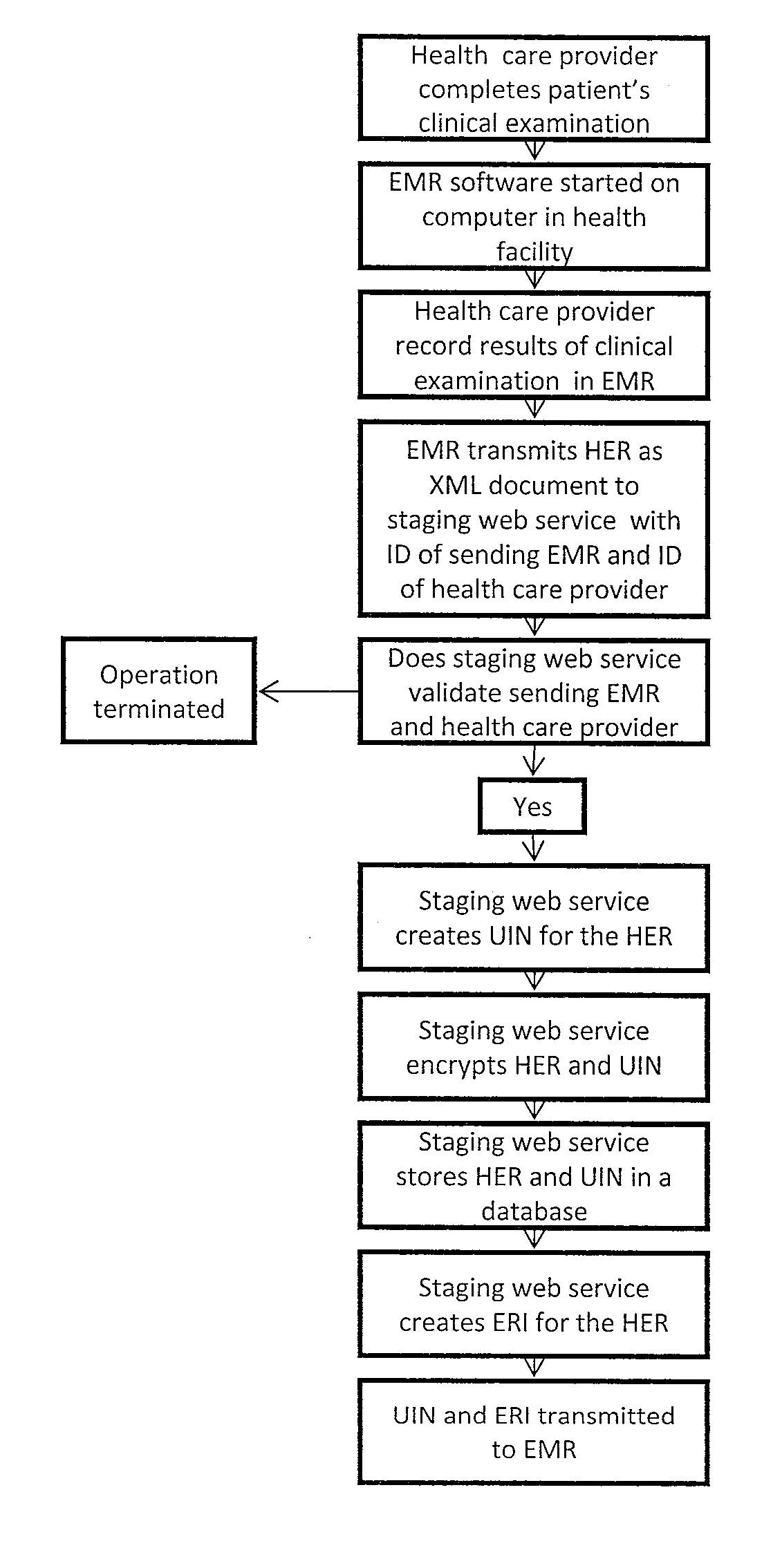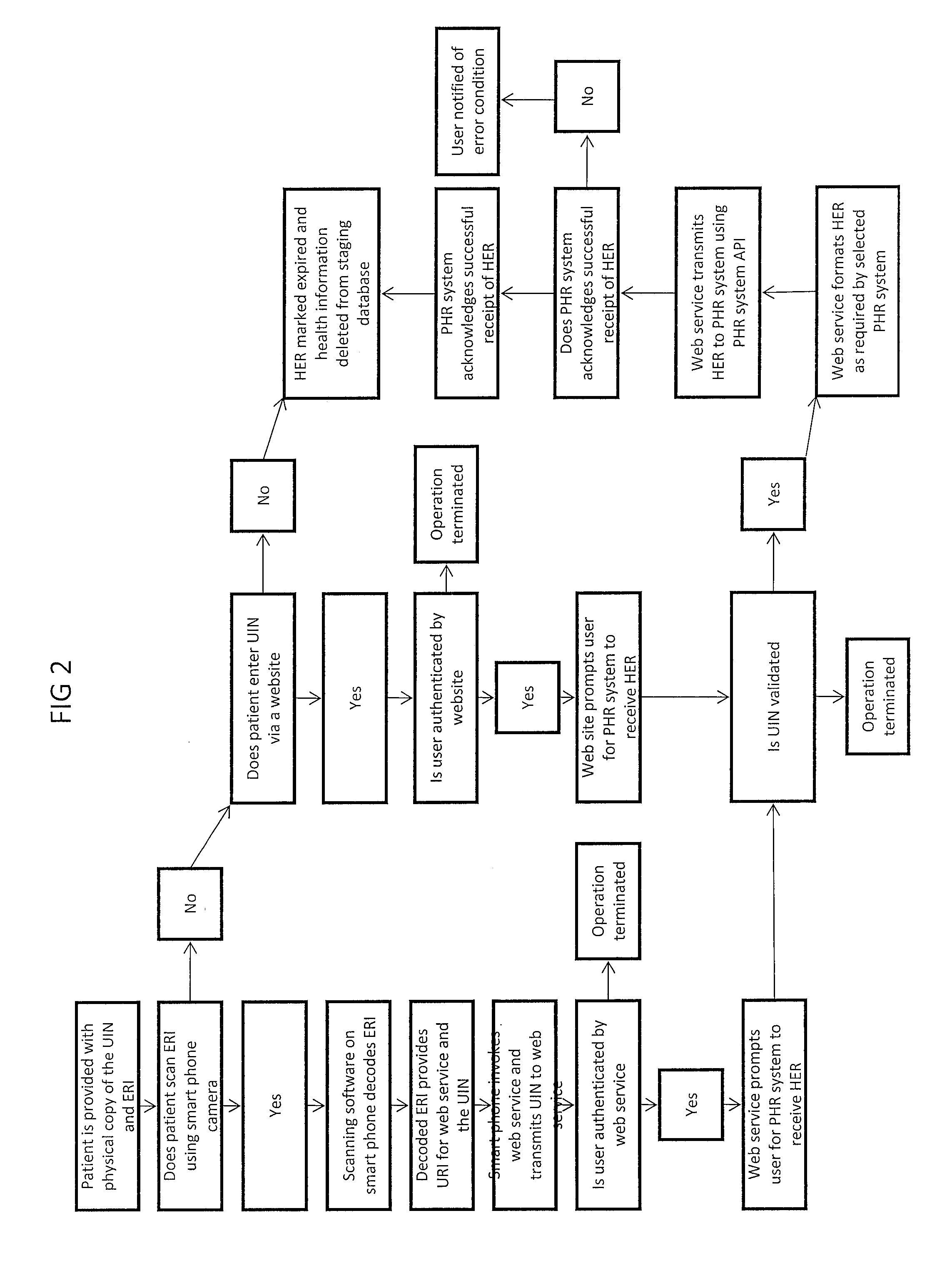Method and system for health information exchange between sources of health information and personal health record systems
a health information and information exchange technology, applied in the field of health information exchange methods and systems, can solve the problems of increasing the overhead burden of managing and maintaining these connections, not adequately addressing the individual patient's need for convenient, private and portable access to personal information, and current approaches limiting individual choi
- Summary
- Abstract
- Description
- Claims
- Application Information
AI Technical Summary
Benefits of technology
Problems solved by technology
Method used
Image
Examples
Embodiment Construction
[0020]The present invention relates to methods and systems which allow the tagging, staging and transmission of a HER, that represent the data associated with a discrete health encounter for an individual, stored in a health information system such as an EMR, to a PHR or other private file, database or repository chosen by and controlled by such individual, without the need to directly connect the systems together. By tagging and transmitting a discreet HER, the individual is provided with easy, private, and portable access to the individual's personal health information, and he or she can store that information in any number of PHR solutions or other health management systems (“HMS”) without the need to disclose where the data is stored to any health care provider or other entity within the healthcare industry.
[0021]The terms individual, patient, and user will be used interchangeably herein. However, it is important to note that a patient need not be an individual with an illness, ...
PUM
 Login to View More
Login to View More Abstract
Description
Claims
Application Information
 Login to View More
Login to View More - R&D
- Intellectual Property
- Life Sciences
- Materials
- Tech Scout
- Unparalleled Data Quality
- Higher Quality Content
- 60% Fewer Hallucinations
Browse by: Latest US Patents, China's latest patents, Technical Efficacy Thesaurus, Application Domain, Technology Topic, Popular Technical Reports.
© 2025 PatSnap. All rights reserved.Legal|Privacy policy|Modern Slavery Act Transparency Statement|Sitemap|About US| Contact US: help@patsnap.com



